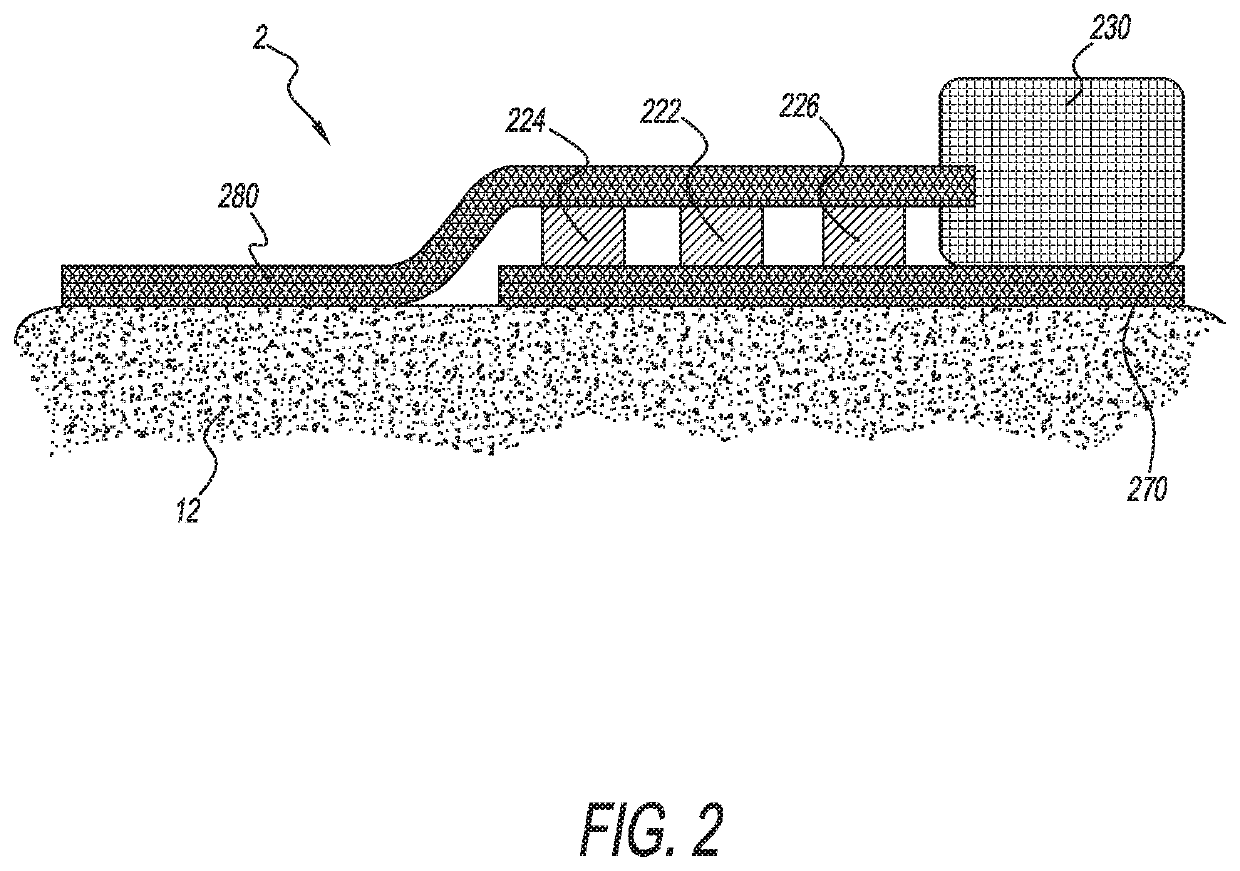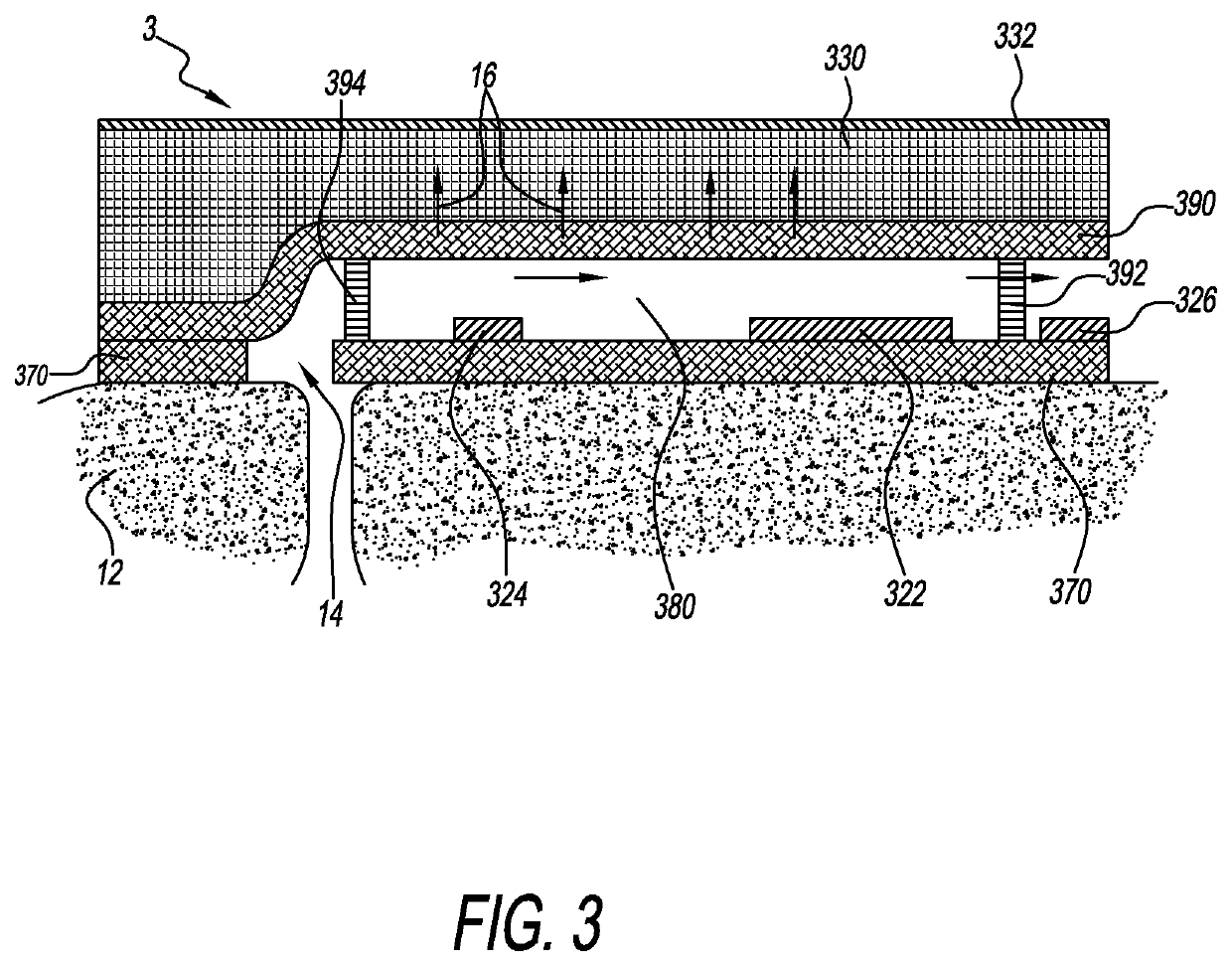Eab biosensors for detecting sweat analytes
- Summary
- Abstract
- Description
- Claims
- Application Information
AI Technical Summary
Benefits of technology
Problems solved by technology
Method used
Image
Examples
Embodiment Construction
[0031]Electrochemical aptamer-based sensors for use in continuous sweat sensing are configured to provide stable sensor responses with a life cycle extensive enough for multiple analyte binding and release cycles. Such sensors include a plurality of individual aptamer sensing elements, as depicted in FIG. 1A, which can repeatedly detect the presence of a molecular target by capturing and releasing target analytes as they contact the aptamer. The sensing element includes an analyte capture complex 140 that has a first end covalently bonded to a sulfur molecule (thiol) 120, which is in turn covalently bonded to a gold electrode base 130. In other embodiments (not shown), the analyte capture complex may be bound to the electrode by means of an ethylenediaminetetraacetic acid (EDTA) strain, to improve adhesion in difficult sensing environments, such as sweat. The sensing element further includes a redox moiety 150 that may be covalently bonded to the aptamer 140 or bound to it by a link...
PUM
| Property | Measurement | Unit |
|---|---|---|
| Mass | aaaaa | aaaaa |
| Atomic weight | aaaaa | aaaaa |
| Atomic weight | aaaaa | aaaaa |
Abstract
Description
Claims
Application Information
 Login to View More
Login to View More - R&D
- Intellectual Property
- Life Sciences
- Materials
- Tech Scout
- Unparalleled Data Quality
- Higher Quality Content
- 60% Fewer Hallucinations
Browse by: Latest US Patents, China's latest patents, Technical Efficacy Thesaurus, Application Domain, Technology Topic, Popular Technical Reports.
© 2025 PatSnap. All rights reserved.Legal|Privacy policy|Modern Slavery Act Transparency Statement|Sitemap|About US| Contact US: help@patsnap.com



